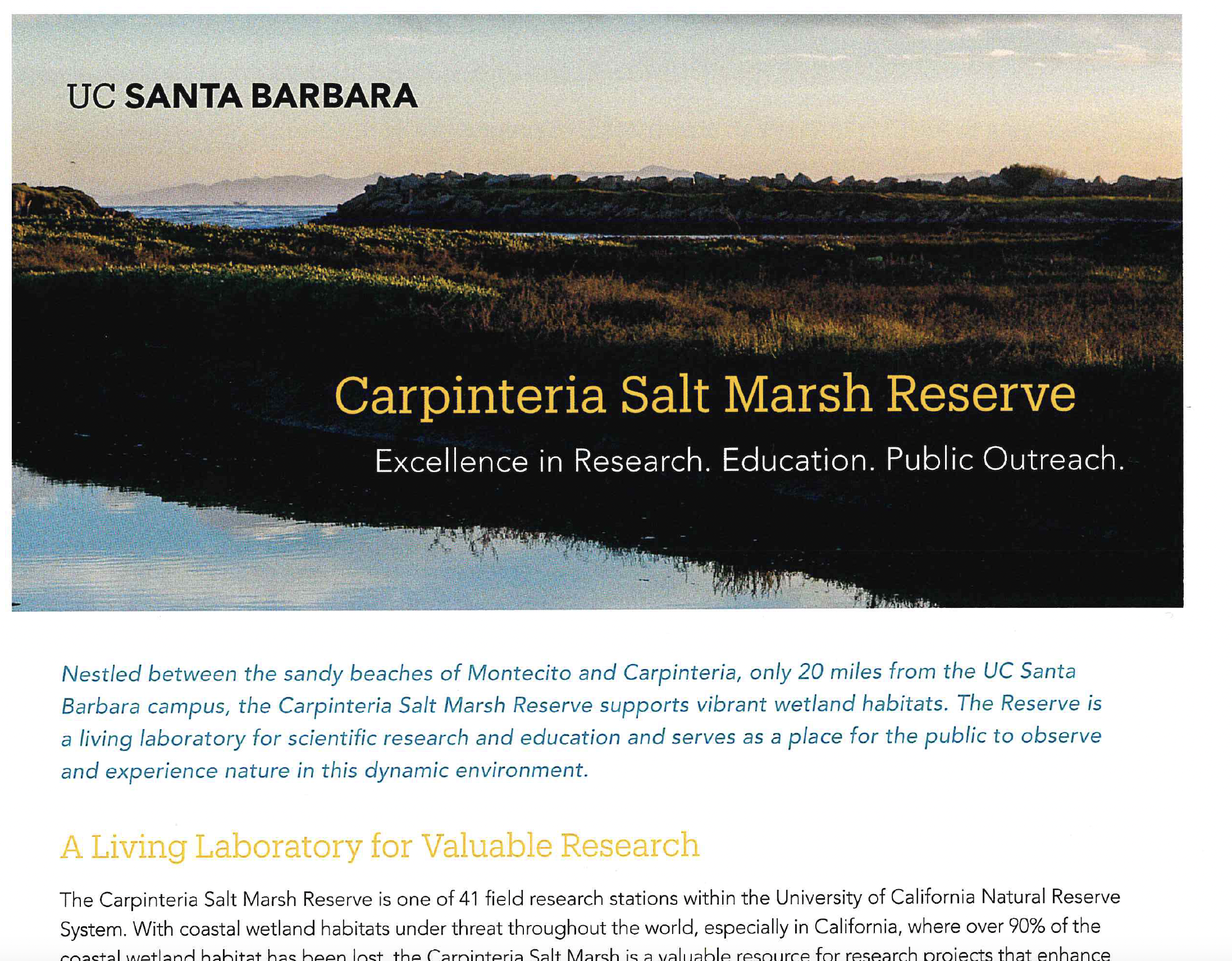
About the
Carpinteria Salt Marsh
One of our most important treasures.
The Carpinteria Salt Marsh is one of the most important treasures and hallmarks of the Carpinteria Valley and the City of Carpinteria. Over 90% of the State’s coastal wetlands have been lost, and those that remain are crucial to support biodiversity, water quality, aid in flood control, sequester carbon, serve as nurseries and essential habitat for fisheries and provide open space for scenic and cultural values. The Carpinteria Salt Marsh is an important statewide example of effective estuary management and protection that serves as a reference estuary with international recognition.
Protecting the Carpinteria Salt Marsh from incompatible and harmful development is crucial to preserve its important ecological and community functions.
Any potential development that will impact its protected ecosystems is a call to action.
On May 9, 2025, the California Coastal Commission (CCC) approved a single-family residence on an extremely small, ecologically significant vacant spit of land at the outlet of the Carpinteria Salt Marsh to the Pacific Ocean. Although the CCC acknowledged that the proposed project violates the mission of the CCC and clearly goes against the mandates of the California Coastal Act, they relied on a loophole to approve the project, claiming the action was necessary to avoid a potential Takings Claim that Friends believes is illusory.
Friends of the Carpinteria Marsh (Friends) objected to this egregious project in critically sensitive wetland habitats that will harm the flora and fauna of the protected Carpinteria Salt Marsh and extensive visual impacts from all vantage points around the marsh (Ash Avenue Park, hiking trails around the northeastern parts of the marsh, bike/pedestrian paths, The Row retail area, Highway101 and the Amtrak railroad corridor).
Friends filed a lawsuit in early June in the Santa Barbara court against the CCC based on their trampling of due process in a rushed decision, failure to fully mitigate the project’s demonstrated environmental impacts under California Environmental Quality Act (CEQA), truncated and inadequate public review, ignoring alternatives to the project that would eliminate environmental impacts (including acquisition and preservation), and improperly concluding that denial would cause a Taking. The lawsuit’s objective is to stop this misguided and environmentally-inappropriate project, require adequate environmental review and project modifications and conditions to protect the Carpinteria Salt Marsh, and establish that legally, the site should be preserved, not developed.
The project proposes a prominent, elevated box shaped house above ecologically sensitive habitats. Construction requires 28 caissons and 107 subsurface piers, which will only delay the time when the project will be washed away by rising tides, waves, and stormflows at this nearly submerged spit of land.
Protecting the Carpinteria Salt Marsh and stopping this ill-considered project will require a community-based effort. Friends is the lead organization in this campaign, and needs the endorsements, engagement, and/or financial support of groups and individuals to carry on this fight.
Proposed Development
Critical Habitat at Risk: Concerns Over Development Near the Marsh Mouth
The mouth of the Carpinteria Salt Marsh is one of the most ecologically sensitive areas in the entire reserve. Recent bird distribution data from 2024 show that this zone—specifically the area adjacent to the 501 Sand Point Road parcel—supports the highest recorded abundance of birds in the marsh. This makes it a vital habitat for foraging and resting for numerous native and migratory species. The proposed development of this parcel raises serious concerns, as construction activity will inevitably disrupt this habitat in the short term. Longer-term impacts are also likely, including increased light and noise pollution, the potential spread of invasive plants, and the presence of domestic pets. While some of these risks are acknowledged in planning documents, enforcement and mitigation measures remain vague or unenforceable. Without a clear and enforceable strategy to protect the marsh mouth, this critical habitat faces irreversible harm.
* Images below are from the April 2025 plans
Bird Distribution Data Highlights Sensitivity of 501 Sand Point Area
These two slides illustrate the spatial distribution of birds within the Carpinteria Salt Marsh. The highest abundance of birds recorded during 2024—the most recent full year of data—was observed at the mouth of the marsh, adjacent to the parcel at 501 Sand Point Road. This area serves as a critical resting and foraging zone for a wide range of bird species.
The proposed development of the 501 Sand Point Road parcel poses significant concerns. In the short term, construction activities will cause considerable disturbance to this sensitive habitat. Over the long term, ongoing human presence will likely result in increased noise and light pollution—disturbances that, while supposedly limited under current guidelines, raise serious enforcement questions. Additionally, there is a risk of invasive plant species being introduced, despite restrictions, and the presence of domestic animals such as cats and dogs—if not strictly contained—poses further threats to the marsh’s ecological integrity. These potential impacts have not been fully addressed in the development discussion and warrant closer scrutiny.
Hear from UC Santa Barbara
Read this study from UC Santa Barbara on the importance of the Carpinteria Salt Marsh—one of the last remaining estuarine wetlands in Southern California. This document highlights its ecological value, endangered species habitat, and the collaborative efforts needed to protect and restore it.
Learn More about the Importance of this Marsh through these SCIENTIFIC PUBLICATIONS
CSMR list of scientific publications (Library)
Using larval trematodes that parasitize snails to evaluate a saltmarsh restoration project, (Huspeni and Lafferty, 2004). Ecological Applications.
Comparing mechanisms of host manipulation across host and parasite taxa, (Lafferty and Shaw, 2013). Journal of Experimental Biology.
“Analyzing ecosystem services as part of ecological networks in three salt marsh ecosystems, (Dee and Keyes, 2021). Ecology.










